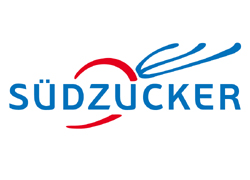Campus
Code Commission doubts salaries reduction by legislative change
 Shortly before the decision in the Bundestag on the amendment on executive compensation, the Government Commission on Corporate Governance had reiterated its criticism of the legislation. The proposed amendment would weaken the position and responsibility of the Supervisory Board, complained commission chairman Klaus-Peter Müller at the 12th German Corporate Governance Code Conference in Berlin. On the assessment of the German Chamber of Industry and Commerce (DIHK) too, the amendment introduced by the CDU/CSU and FDP to the 2012 company law increases the legal uncertainty for existing and new executive contracts and raises liability issues, as well as many practical questions from the perspective of the Supervisory Board. According to the government parties’ resolution, the shareholders' meeting will annually decide on the remuneration system for Executive Board members in listed companies.
Shortly before the decision in the Bundestag on the amendment on executive compensation, the Government Commission on Corporate Governance had reiterated its criticism of the legislation. The proposed amendment would weaken the position and responsibility of the Supervisory Board, complained commission chairman Klaus-Peter Müller at the 12th German Corporate Governance Code Conference in Berlin. On the assessment of the German Chamber of Industry and Commerce (DIHK) too, the amendment introduced by the CDU/CSU and FDP to the 2012 company law increases the legal uncertainty for existing and new executive contracts and raises liability issues, as well as many practical questions from the perspective of the Supervisory Board. According to the government parties’ resolution, the shareholders' meeting will annually decide on the remuneration system for Executive Board members in listed companies.
Kartellamt reforms calculation method for anti-competitive agreements
Major corporations are in future threatened with more painful fines from the Federal Cartel Office for competition agreements. This is clear from the authority’s new Guidelines on Fines. If these companies are active in a variety of markets and the agreements relate only to a specific product, higher amounts could be due, Bundeskartellamt President Andreas Mundt announced. Under the new “Guidelines for the assessment of fines in cartel offences” that the Federal Cartel Office published on 25 June, as well as annual sales the amount of revenues the company achieved in the cartelized market in the period of the crime will be decisive for the calculation of the fine. Due to improved methods of investigation and a whistleblower leniency programme the Federal Cartel Office is now closing more and more cases in the fight against illegal collusion in the German economy.
No relationship: rating, return, risk
The returns on a corporate bond are often, in the case of SME bonds, measured on brand awareness more than on risk. This is shown in a study by Brunswick European Law School / Ostfalia. The experts investigated 85 SME bonds that were placed in the period between March 2010 and May 2013.
The study reveals a problem. If there is no relationship between return and risk, what can the investor use for guidance? In the event of a crisis, according to the study’s authors, investors in SME bonds are at a disadvantage compared to other lenders because they have no way of accurately assessing the risk.
Moreover, the bonds are often issued by intermediary holding companies, which in the case of an emergency become a valueless shell for the creditor and deny the investors any influence over the remaining assets of the company, which is in any case limited. A further factor is that a majority of the SME bonds investigated had no own ratings.
Since private investors frequently orient themselves on the SME’s brand awareness and its products, the rate of interest is often also measured on the basis of these factors. Corporate bonds from Underberg or Katjes have profited from this in recent years. But since as many as six corporate bonds have failed in recent months, and others are struggling along below their nominal value of 100 percent, the frequent lack of any relationship between risk and interest rate is apparent. And the authors raise a further point for consideration. In many cases the issuers are companies that are no longer able to obtain finance through traditional channels – for example participations or bank loans – due to a lack of creditworthiness.















